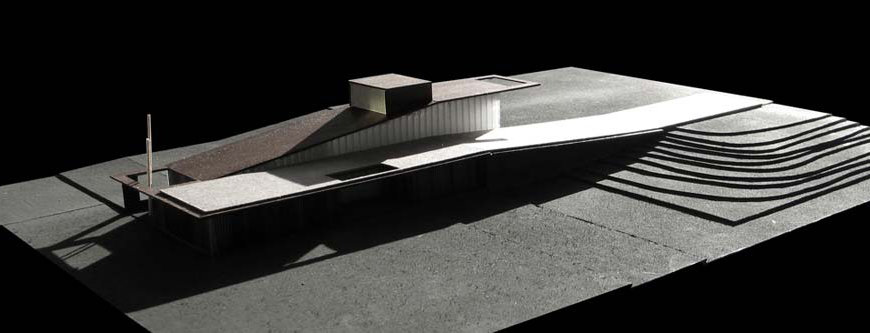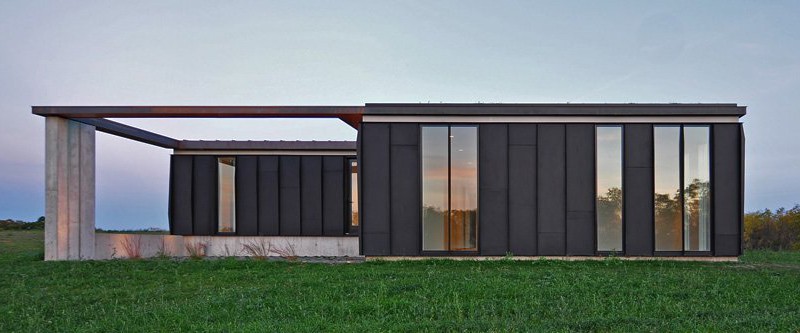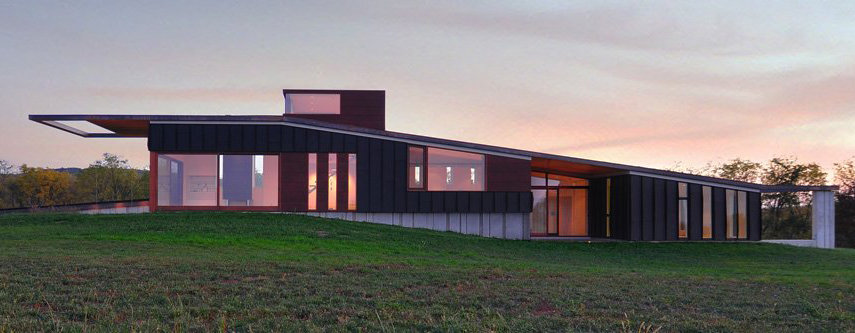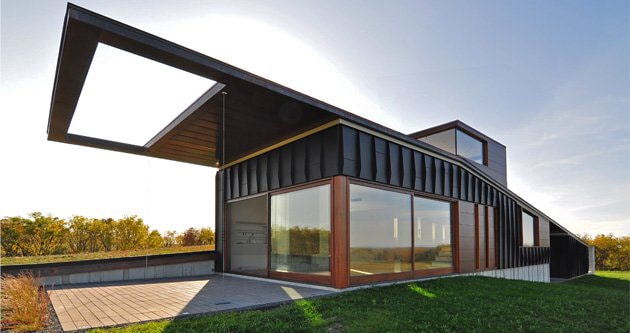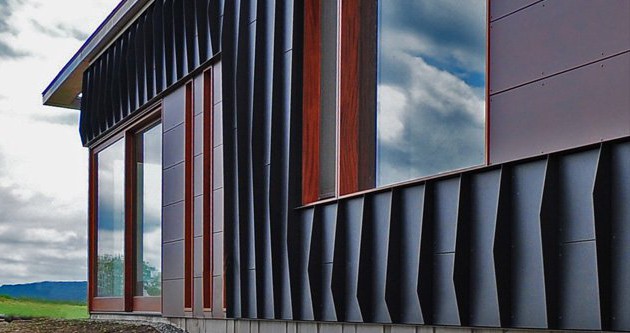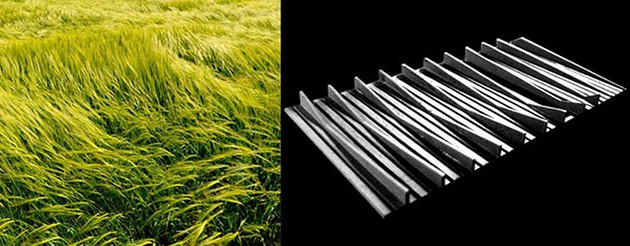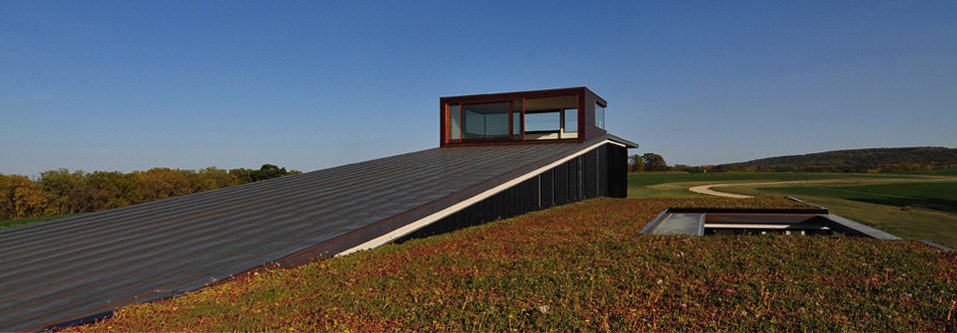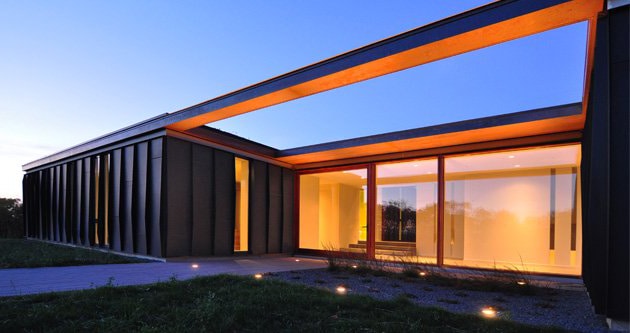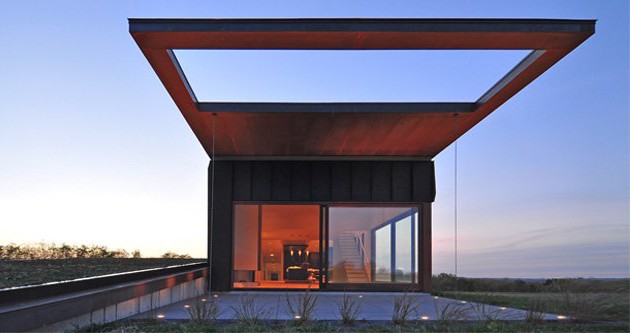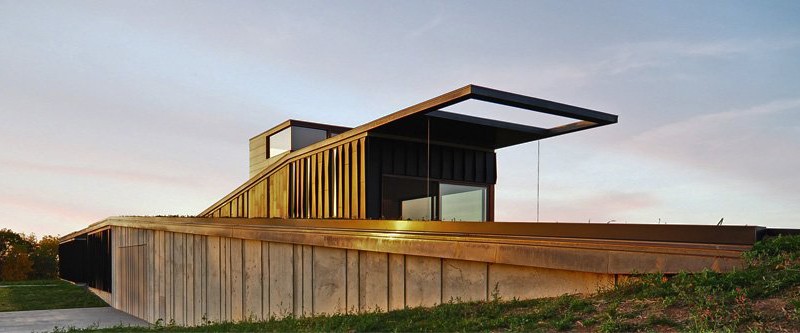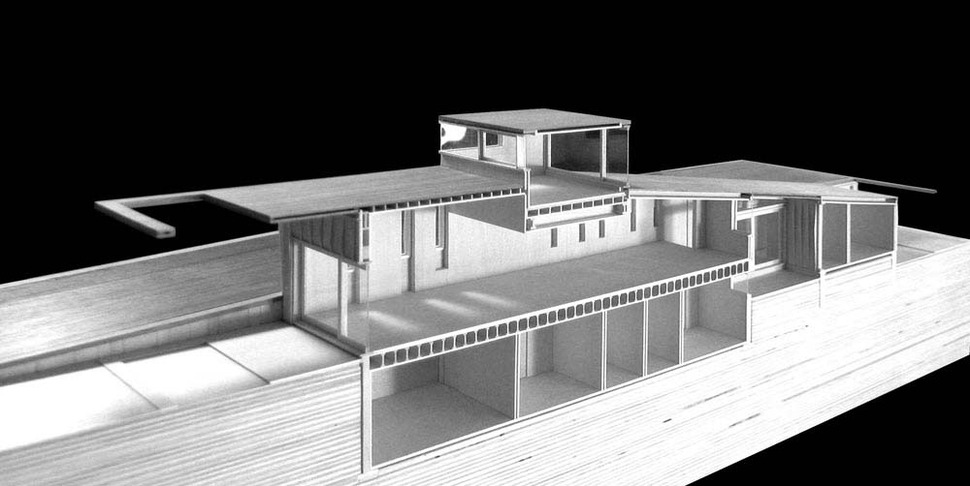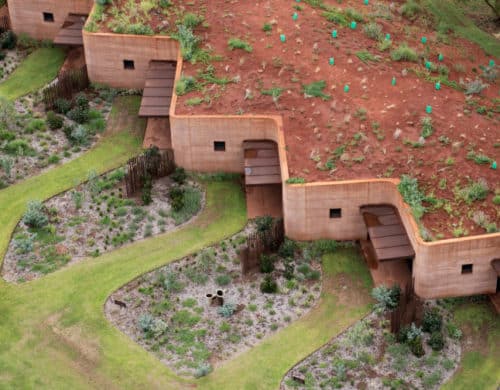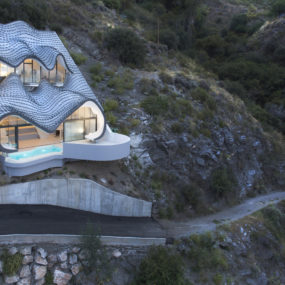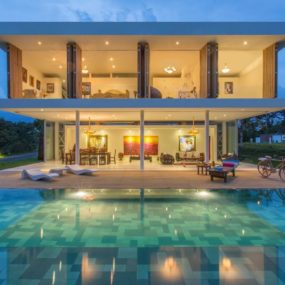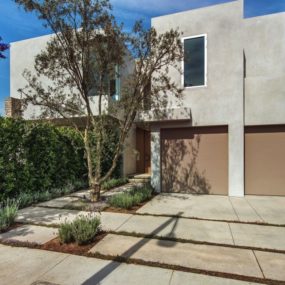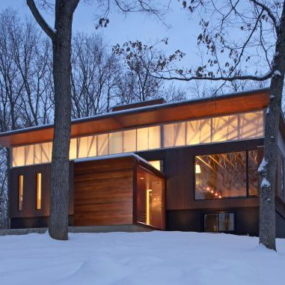Topo House designed by Johnsen Schmaling Architects is a contemporary contribution to this countryside setting here in Blue Mounds, Wisconsin. But in spite of its modern edge, the home has an organic quality about it that makes it a part of the landscape in more ways than one. This sprawling, low-scale home is inspired by the terrain, emerging from a shallow slope and surrounded by lush pastures as far as the eye can see. The earth envelops the lower level of this partially buried structure, integrating it into the land. Complemented by a palette of natural materials and glazing, this unusual house is a part of these natural surroundings in every sense.
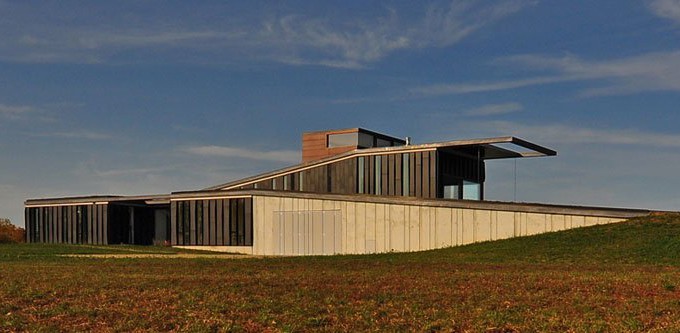
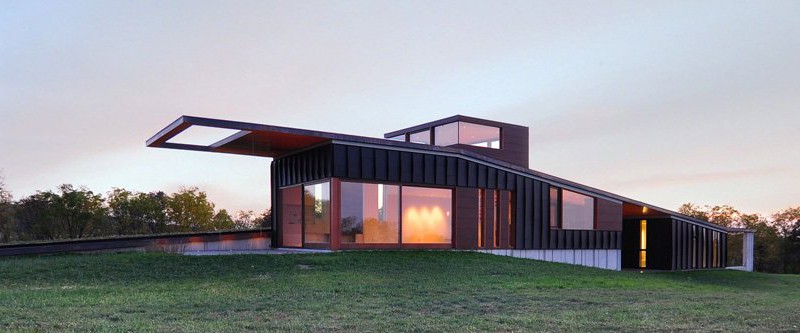
Starting with its silhouette, the house is almost a natural progression of the sloping landscape. From the architects, “The program is organized in two staggered bars, forming a partially submerged low-slung building volume with a meticulously detailed roof plane that slowly peels itself up from the ground and extends the adjacent fields as a green carpet over the lower portion of the house.”

